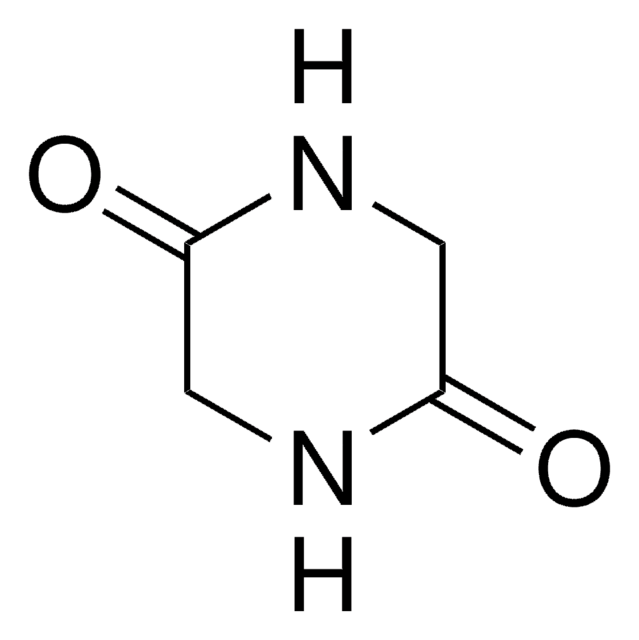1295800
USP
Glycine
United States Pharmacopeia (USP) Reference Standard
Synonym(s):
Aminoacetic acid, Aminoethanoic acid, Glycocoll
About This Item
Recommended Products
grade
pharmaceutical primary standard
API family
glycine
manufacturer/tradename
USP
pH
4(0.2 molar aqueous solution)
pKa (25 °C)
(1) 2.35, (2) 9.60
2.35
mp
240 °C (dec.) (lit.)
application(s)
pharmaceutical (small molecule)
format
neat
SMILES string
NCC(O)=O
InChI
1S/C2H5NO2/c3-1-2(4)5/h1,3H2,(H,4,5)
Looking for similar products? Visit Product Comparison Guide
General description
Application
- Glycine Irrigation
- Theophylline Sodium Glycinate
- Glycyl-l-tyrosine
- Glycyl-l-glutamine
- Pyrroloquinoline Quinone Disodium
Biochem/physiol Actions
Analysis Note
Other Notes
related product
Storage Class Code
13 - Non Combustible Solids
WGK
WGK 1
Certificates of Analysis (COA)
Search for Certificates of Analysis (COA) by entering the products Lot/Batch Number. Lot and Batch Numbers can be found on a product’s label following the words ‘Lot’ or ‘Batch’.
Need A Sample COA?
This is a sample Certificate of Analysis (COA) and may not represent a recently manufactured lot of this specific product.
Already Own This Product?
Find documentation for the products that you have recently purchased in the Document Library.
Customers Also Viewed
Our team of scientists has experience in all areas of research including Life Science, Material Science, Chemical Synthesis, Chromatography, Analytical and many others.
Contact Technical Service








